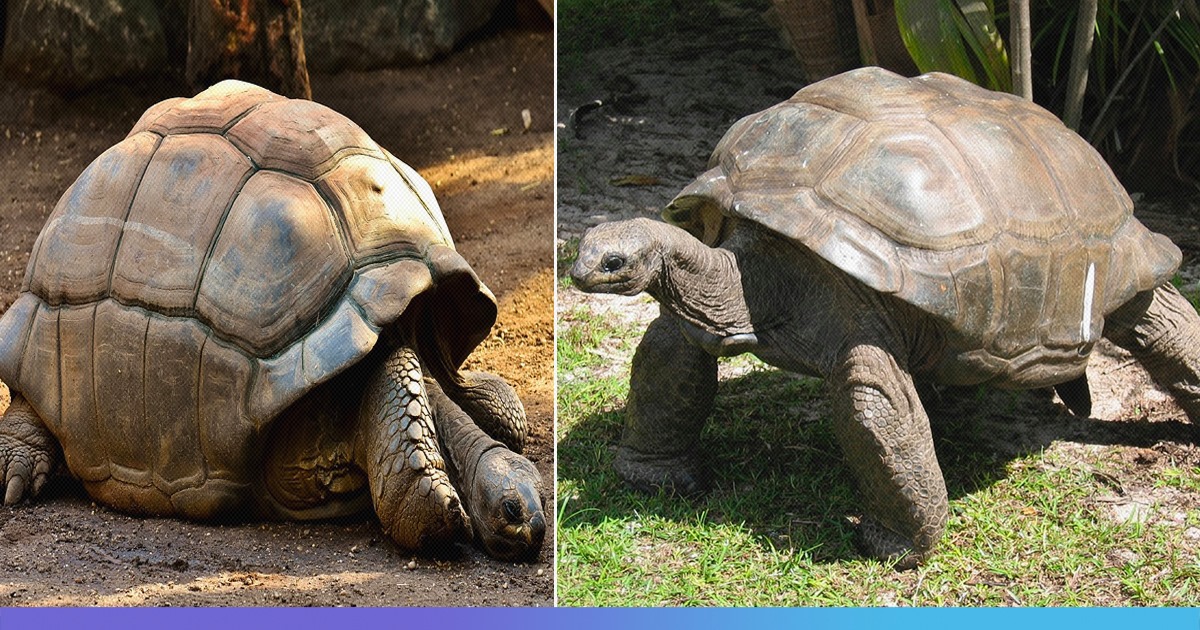100-Year-Old Tortoise Sires Enough Offsprings To Save Species From Extinction
14 Jan 2020 10:21 AM GMT | Updated 15 Jan 2020 11:11 AM GMT
Editor : Prateek Gautam |
A free soul who believes that journalism, apart from politics, should stand for social cause and the environment.
By : The Logical Indian Crew
We are an independent and public-spirited digital media platform for Indian millennials. We report news and issues that matter as well as give you the opportunity to take action.
A 100-year-old tortoise, Diego was shipped out of the San Diego Zoo in 1976 as part of a breeding program, he retires having saved his species from extinction.
A member of the Chelonoidis hoodensis, or the giant tortoise species, Diego, has been credited with saving his dying species.
Before Diego sired 800 offsprings in a wildly successful breeding program, only 15 giant Española tortoises were left in the wild.
On January 10, the Galapagos National Park, where Diego resided, called off the captive breeding programme. Diego will soon return home to Española Island, a place he had left almost 80 years ago.
Diego is a hundred years old now.
"Based on the results of the last census conducted at the end of 2019 and all the data available since 1960, both of the island and its turtle population, we developed mathematical models with different possible scenarios for the next hundred years and in all the conclusion was that the island has sufficient conditions to keep the turtle population that will continue to grow normally, even without any new repatriation of juveniles," The New York Times quoted Washington Tapia, director, Giant Tortoise Restoration Initiative (GTRI) of the National Park, as saying.
In 1976, a breeding programme was initiated to save the tortoise population. At that time there were only two males and 12 females of his species alive on the island.
As a result of this initiative, the population has risen from 15 to 2,000.
Paternity tests undertaken at the State University of New York in Syracuse, show that about 40 per cent of the offsprings produced can be attributed to Diego.
"Another more reserved, less charismatic male — 'E5' — has generated about 60 per cent," the NYT report quotes Gibbs as saying. "The third male — 'E3' — virtually none. So Diego has been critical." said James P Gibbs, a professor of environmental and forest biology.
Known as one of the world's most premier destinations for wildlife viewing, Charles Darwin visited the Galapagos Islands as he worked on the theory of evolution.
"It might come as a surprise to many but tortoises do form what we would call 'relationships.' The social hierarchies and relationships of giant tortoises are very poorly known," said Professor Gibbs.
Diego's unique personality traits make him popular amongst his peers. Diego is loud, aggressive, and demonstrative. Diego has attractive features like "long leathery neck, dull-yellow face and beady eyes."
At his full length, he extends to about five feet and weighs about 176 pounds.
The long neck is essential for his species' survival, aids the tortoises to crane their neck to feed on cacti.
There were several contributing factors on the Galápagos Islands, that was slowly wiping out Diego's entire species.
Tortoises on these Islands were deemed to be a source of food for seafarers in the 1800s. Their ability to survive ships for up to a year made them prime candidates for this purpose. Therefore, they got picked up from the islands in large numbers.
Feral goats posed other threats to the indigenous tortoises, apart from competing for the food, they also threatened their habitat.
Also read: Tigress, Three Cubs Found Dead In Goa In Four Days
 All section
All section















